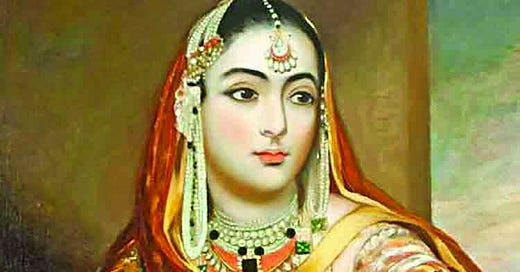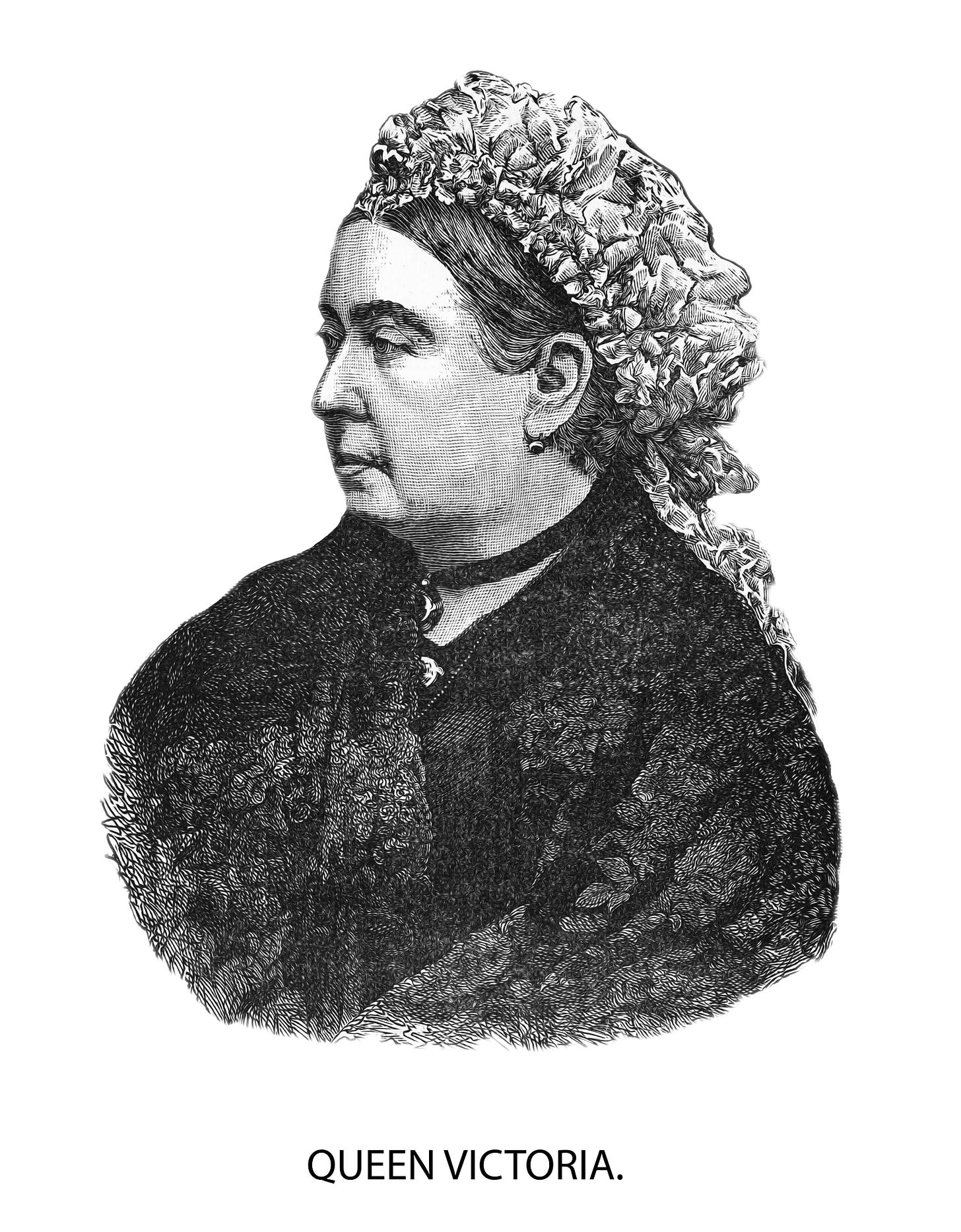The Tragic Story of a Forgotten Indian Queen in Paris
The story of Malika Kishwar, the remarkable and forgotten queen of Awadh, India
Père Lachaise, France’s Most Famous Cemetery
With nearly a million visitors every year, Père Lachaise in Paris is one of the most frequented cemeteries in the world.
The famous necropolis is adorned by the remains of American rock star Jim Morrison who died in 1971. Keeping him company are other esteemed celebrities like Édith Piaf, one of the country's most widely known international stars, Frederic Chopin, the famed Polish composer, and also the legendary writer Oscar Wilde. If there is somewhere, you can meet all the stars under one single roof it is undoubtedly the Père Lachaise in Paris.
And in between all of them, under a platform of rock, lies the grave of a tragic Indian queen since 1858. Most tourists walk past her grave, oblivious to her unmarked existence. The woman appears in yellowed old books by several names.
To some she was Malika Kishwar, while others knew her as Janab-i Aliyah, Her Sublime Excellency, mother of Wajid Ali Shah, the last king of Awadh state before the British annexed it in 1856 using the unfair Doctrine of Lapse.
In 1856, the brave queen decided to go to England so she might speak ‘woman to woman’ to the English queen in person and plead her case and win back her family right from the unfair actions of the British East India Company. After all, Queen Victoria was also a ‘mother’ and she might understand the despair the British had unleashed, and restore to the House of Awadh, Its rightful honor.
So proceeded Malika Kishwar, her health already in decline, braving cold winds in a foreign land, to plead the cause of royal justice.

The Story of Malika Kishwar
In the year 1856, the kingdom of Awadh faced unjust actions by the colonial British Raj.
Under the Doctrine of Lapse, the then Governor-General of India, Lord Dalhousie, had decreed that if an Indian ruler did not have a direct male heir (adopted children would not be admissible) or if the ruler was unable to ensure good governance, his kingdom would be taken by the East India Company.
The Company’s sights were on the Kingdom of Awadh for quite some time due to its immense treasures and using the excuse of ‘bad governance’ of the then king, Wajid Ali Shah, the East Indian company annexed the kingdom and instructed the ruler to go to exile to Calcutta.
Wajid Ali Shah was a peaceful man, who was well-liked by the populace and this decision of the British is often cited as one of the main reasons for the Indian uprising of 1857 that shook the British Empire to its bones.
The King’s mother Malika Kishwar was one fiery woman who was not afraid of anybody. When she learned of the unjust annexation by the British, she sought an appointment with the British general, James Outram to discuss the illegality of the move by the British.
However, it did not lead to any favorable outcome and that was when both mother and son decided to plead their case to Queen Victoria herself by going to England.
The Two Queens Met
However, when they reached Calcutta, Wajid Ali Khan’s health deteriorated, and he gave up on his ambition to secure an appointment with Queen Victoria. However, Malika did not give up. Accompanied by her grandchildren, another son, and numerous attendants, she set out to meet Queen Victoria.
They left Kolkata on 15th June, but while trying to off-board at Suez, the ship, a box containing jewels worth 50,000 pounds for the Queen fell into the sea. Nevertheless, the queen continued her journey and finally reached Southampton via the SS Indus on 21st August 1856.
Malika’s huge entourage created a buzz in England. The Queen had along with her 9 maids, 110 attendants, many soldiers, and 7 eunuchs. Their large number and exotic cultural appearance created headlines across all popular newspapers at that time. They stayed at the Royal York Hotel for 10 days waiting for the queen to give an appointment to Malika Kishwar.
In the end, it took a lot of back-door negotiation and a hefty amount of money to make the meeting come true. On the 4th of July 1857, Malika Kishwar finally met Queen Victoria at Buckingham Palace. The encounter is recorded in the Queen's daily journal as she said.
“After luncheon received the Queen of Oudh. Much trouble in arranging that no man should look at her… She threw back her veil and kissed my hand, which the (her) grandson also did… She was much weighed down by her heavy dress, her crown, and jewels, being very small… A few words were exchanged, when the Queen and I were seated… We then retired but missed the interesting site of her departure in state…”
Malika Kishwar Dies
Despite the struggle Malika endured to meet the British queen, nothing fruitful came out of the meeting as Queen Victoria said that the power to revoke the annexation rests with the British Parliament. Highly disappointed, Malika started planning her next move by approaching the British parliament when the Indian uprising of 1857 happened.
The uprising made it impossible for Malika Kishwar to continue her dialogue with the English as her son was declared a traitor and put under house arrest in Calcutta. She was asked to declare herself as a ‘British subject’ and accept a British passport if she wished to travel.
This was a ploy by the British to make the royal family officially ‘accept’ the annexation. Malika refused to be cowered down and started seeking alternate routes to go back.
Finally, she was assisted by the French who allowed her to go back to India via France. Unfortunately, all the stress and the travel took a toil on her fragile health and she passed away just a day after they landed in Paris. She was buried at the then newly created Muslim quarter at Père Lachaise.
Her act was an amazing testimony of boldness, love for her kingdom, and seeking justice for her son. Not many know her story but for those who do, she is still an eternal inspiration of motherhood, love, and bravery all rolled into one.
Sources
· Malika Kishwar: The Queen Who Ventured Beyond The Zenana
· Malika Kishwar, the Awadh Queen Who Rests in France’s Most Famous Cemetery
· FORGOTTEN QUEEN OF OUDH: MALIKA KISHWAR
· Forgotten Queen of Awadh : Malika Kishwar
· Forgotten Queen of Oudh: Malika Kishwar
· ROLE AND THE RULE OF WOMEN IN AWADH
· Forgotten history: How the last Nawab of Oudh built a mini Lucknow in Calcutta







The reason that I subscribed to your newsletter, is that I appreciate learning about history 's hidden corners, forgotten people & unknown events! I wonder, do you also include the stories of forgotten scientists? Not so much as: Nikola Tesla & Marie Curie, as: Rosalind Franklin & Avicenna. (Just a suggestion.) Thanks.